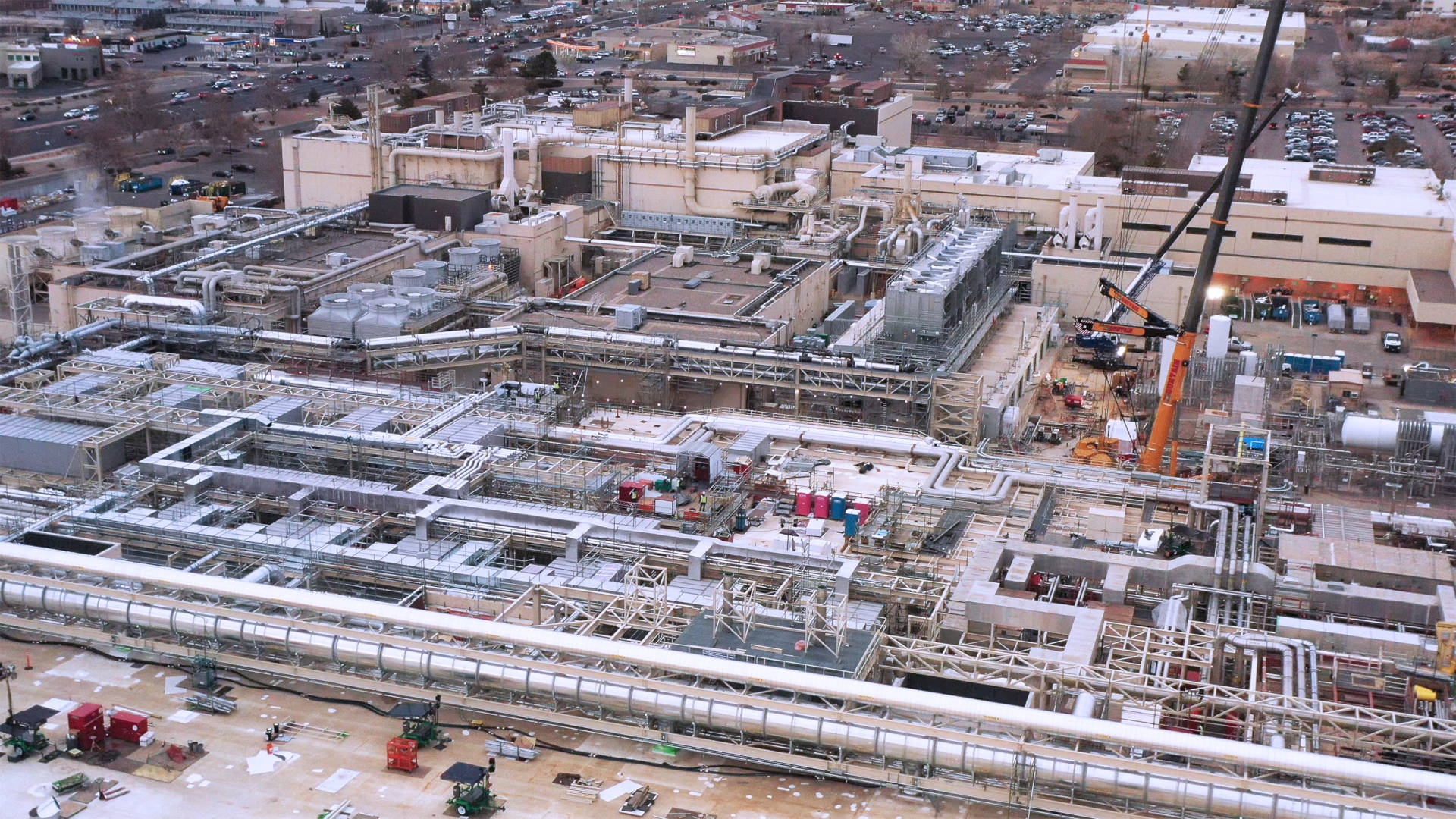Intel will have spent over $160,000,000,000 on new fabs, assembly, packaging, testing and R&D facilities by 2030
Big bucks on big projects equals big expectations. No pressure, then.

It won't have escaped your notice that Intel has been in the news a lot recently, either talking about its race to be at the cutting edge of chip manufacturing, getting billions of dollars from the US administration, or having a few issues with its high-end CPUs running the latest games. It's certainly been very busy, though, building all kinds of new facilities for making processors, as well as expanding its research laboratories. In a brief report on its 10 largest construction projects, Intel shared that the total cost of all the current investments will be over $160 billion by the time it's all finished.
If you're wondering whether that's a lot of money for such things, then rest assured, it absolutely is. Yes, semiconductor foundries all cost many billions of dollars to design and build, and TSMC has spent in the region of $65 billion to construct three chip-making plants in Arizona. However, Intel is also spending a bucket load of cash on improving its research and development facility in Hillsboro, specifically over $36 billion.
To put that into perspective, Nvidia spent a little under $9 billion on R&D in its last financial year and although the company never goes into much detail as to where that money goes, a large portion of it is almost certainly going into designing its next generation of AI superchips. Nvidia doesn't make its own chips, though, whereas Intel does—well, most of them, at least, as roughly one-third of all the wafers it needs are produced by TSMC.
Big numbers are the star feature of Intel's report. For example, the $32 billion investment in building two fabs in Arizona has, so far, resulted in 430,000 cubic yards (around 329,000 cubic metres) of concrete poured into the ground. That's 132 Olympic-sized swimming pools for those who prefer a water-based measurement system.
Over in Ohio, it's all similarly massive: More than 4 million cubic yards of earth moved over the past year, along with 10 miles (16.1 km) of underground utilities and 32 miles (51.5 km) of conduits being installed.
While two-thirds of the $160 billion investment is for constructing and upgrading facilities in the US, fabs in Ireland and Israel are being treated to a total of over $40 billion, as well as $7 billion for an expanded 3D packaging plant and new assembly facility in Malaysia and $4.6 billion for a new assembly and testing system in Poland.

Best CPU for gaming: The top chips from Intel and AMD.
Best gaming motherboard: The right boards.
Best graphics card: Your perfect pixel-pusher awaits.
Best SSD for gaming: Get into the game ahead of the rest.
There's no escaping the fact that this is a staggering amount of money and there's a non-zero risk that it doesn't pay off. The days of Intel having a near-total monopoly on the processor market are long gone, as it's not just AMD that it has to contend with. In the world of AI, Nvidia dominates that sector and Google and Amazon are also investing heavily in the continued development of their chips for machine learning.
The biggest gaming news, reviews and hardware deals
Keep up to date with the most important stories and the best deals, as picked by the PC Gamer team.
Intel has the largest market share when it comes to x86 processors, but with Qualcomm stepping into that sector with its Snapdragon X Elite and AMD looking to capture a larger share with its next-generation Zen 5 architecture, the 55-year-old chip giant is clearly not expecting to have it all its way in the coming years.
What's that saying? "You have to spend money to make money" or something like that. Investors will be hoping Intel's plans come to fruition as $160 billion is a lot of money.

Nick, gaming, and computers all first met in 1981, with the love affair starting on a Sinclair ZX81 in kit form and a book on ZX Basic. He ended up becoming a physics and IT teacher, but by the late 1990s decided it was time to cut his teeth writing for a long defunct UK tech site. He went on to do the same at Madonion, helping to write the help files for 3DMark and PCMark. After a short stint working at Beyond3D.com, Nick joined Futuremark (MadOnion rebranded) full-time, as editor-in-chief for its gaming and hardware section, YouGamers. After the site shutdown, he became an engineering and computing lecturer for many years, but missed the writing bug. Cue four years at TechSpot.com and over 100 long articles on anything and everything. He freely admits to being far too obsessed with GPUs and open world grindy RPGs, but who isn't these days?

